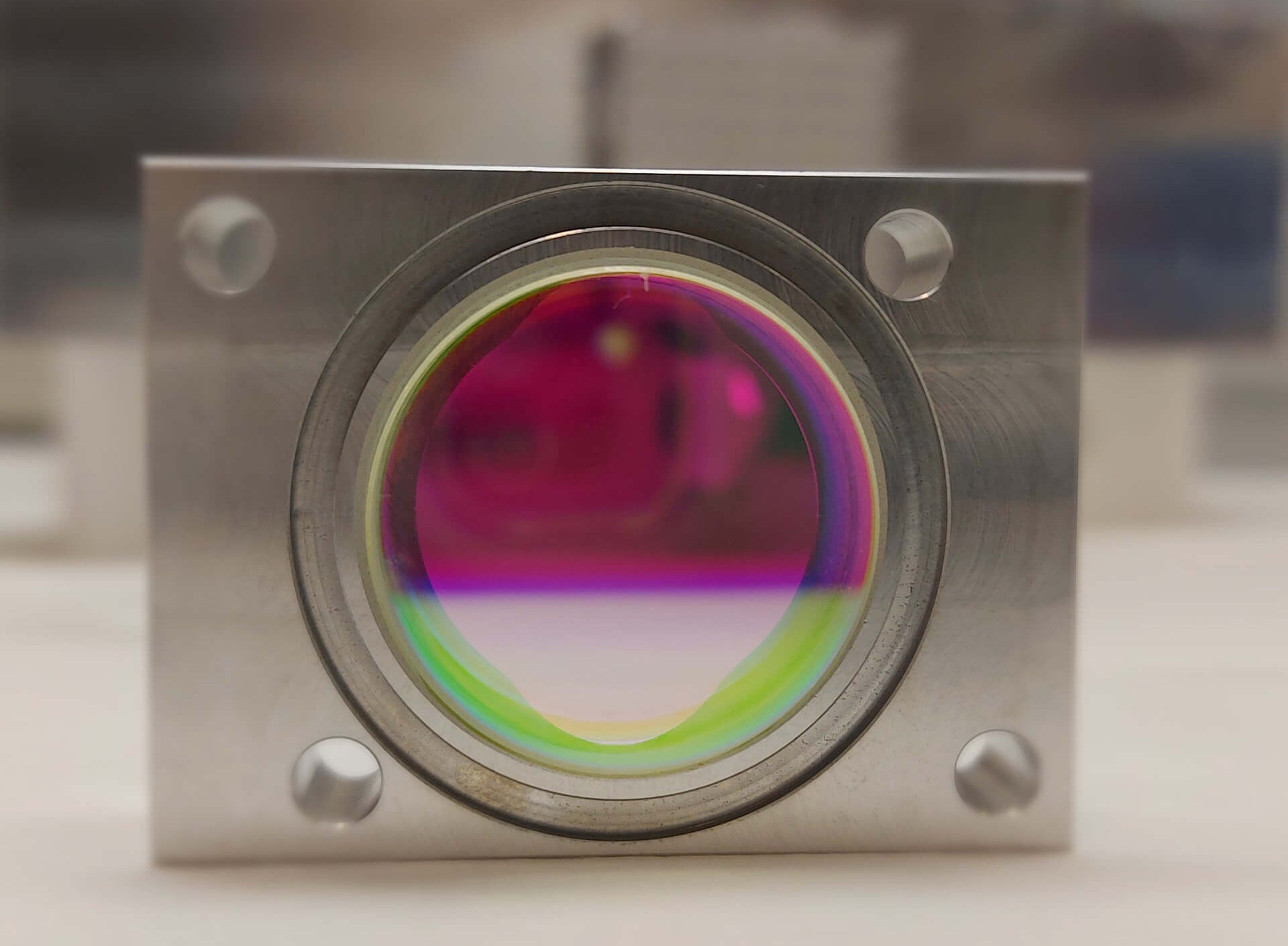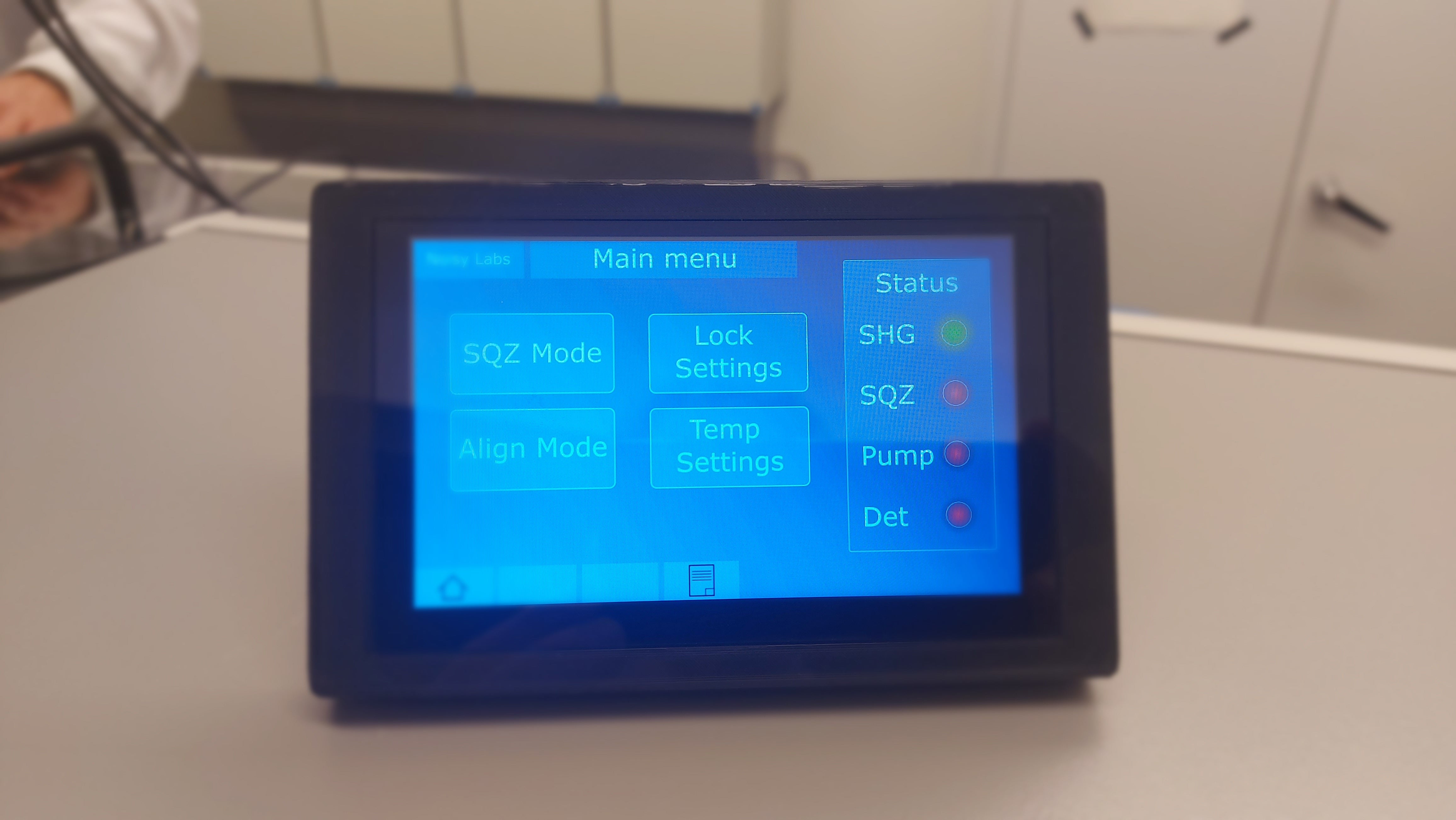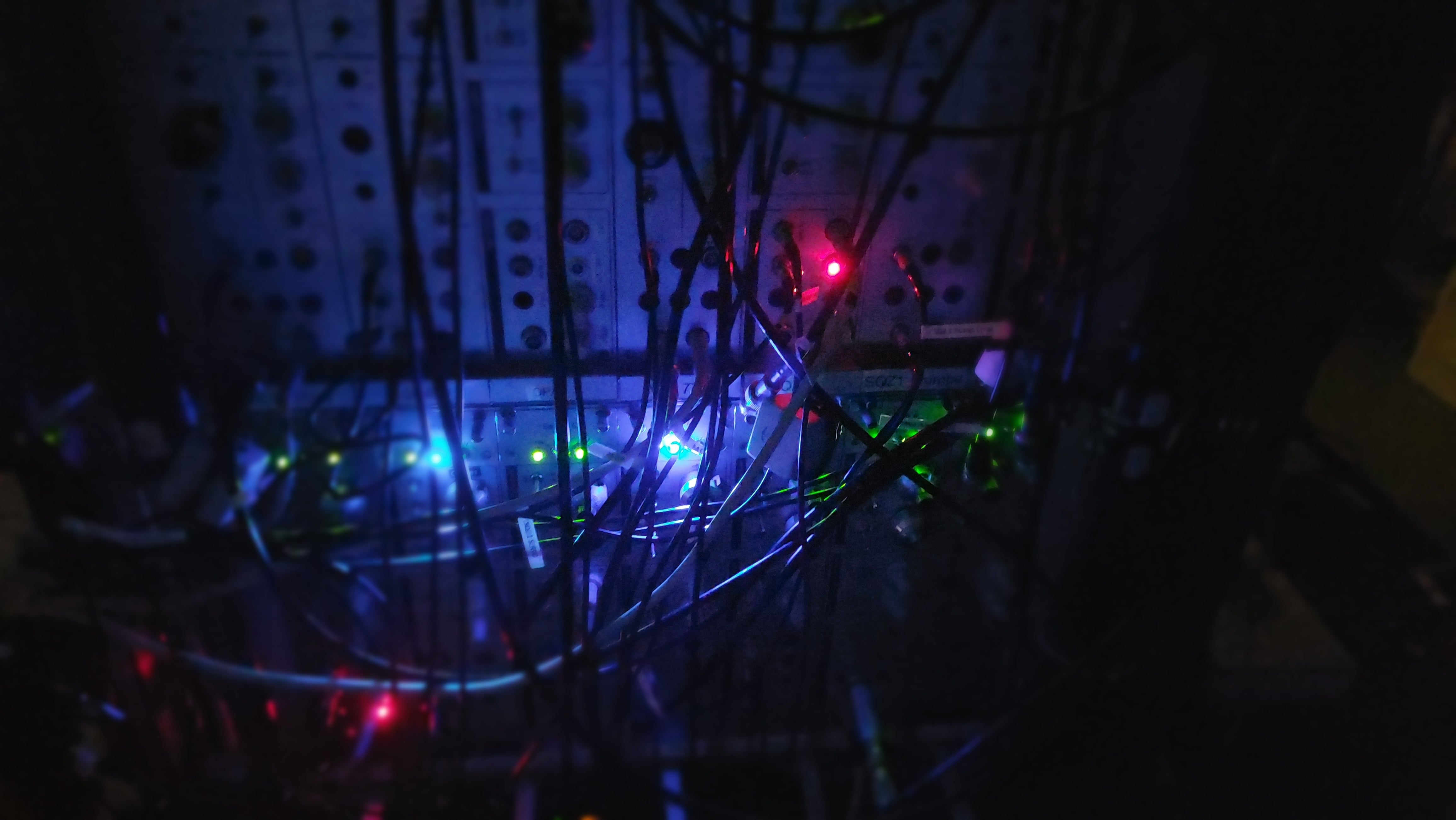This is what our clients say
Prof. Dr. Lukas Nowotny and PD Dr. Martin Frimmer, both ETH Zurich
Prof. Dr.-Ing. Christian Rembe, Clausthal University of Technology
Prof. Dr. Fabio Sciarrino, Sapienza University Rome
Squeezed Light for…
Conventional laser light leads to many individual photons during measurements. Squeezed light leads to many photon pairs. And these are all temporally correlated with each other. This leads to two technologically useful quantum effects. (A) A laser beam of squeezed light has less (i.e. ‘squeezed’) photon shot noise. (B) If photons are lost, they cannot be replaced without this being noticeable during measurement.
The photon pairs are generated from laser light of half wavelength - in the so-called ‘squeezed laser’.
Sensing
Sensing must aim for the best possible signal-to-noise ratio. Squeezed light reduces photon shot noise compared to conventional laser light. This is a revolutionary approach, especially when the signal can no longer be improved by increasing the light’s intensity.
- With squeezed light, quantum measurement noise, which results from quantum uncertainty, can theoretically be reduced at will. Even restrictions due to Heisenberg's uncertainty principle can be circumvented
- About a dozen research labs worldwide can produce significantly squeezed light. Instead of spending years of research trying to do the same, you can buy directly from the developer of the world's most successful squeezed light technology.
- Sensing can be made more sensitive even at lower laser intensity. This allows sensitive samples to be protected or the risk of accidents with laser radiation to be reduced.
Computing
Squeezed light is the precursor of the light that will be needed for the optical quantum computer. The necessary GKP states of light can be produced from them, but so far only in theory. If we are able to build quantum computers efficiently in the future, more complicated calculations can be carried out faster and with fewer resources.
- Optical quantum computers will be universal, fault-tolerant and scalable. They will require neither vacuum systems nor ultra-low temperatures. In the long term, it is precisely these advantages over other platforms that could be decisive.
- If you are researching or developing optical quantum computers, don't waste time making squeezed light. Buy here directly from the developers of the world's most successful squeezed light technology.
Metrology
In contrast to sensing, metrology aims to measure constants (as accurately as possible). One example of this is natural constants such as the speed of light in vacuum.
A technical example is the determination of detection efficiencies of photosensors.
- Squeezed light has proven to be a powerful tool for calibrating the detection efficiency of photosensors without the need for a calibrated lamp.
- If the photosensor to be calibrated is used to measure squeezed light in a known setup, the required detection efficiency is obtained directly from the achieved squeeze and the anti-squeeze factors.
Communication
Quantum key distribution (QKD) is the only method to make the security of communication independent of the potential efficiency of computing algorithms. With QKD, each raw key value is quantum mechanically random and the privacy of the key values owned by two parties can be brought arbitrarily close to 100% by postprocessing the data..
- Normally, QKD only secures the communication channel. However, squeezed Light is also able to secure the remote measuring device. Squeezed Light therefore provides additional protection against side channel attacks.
- ’One-sided device independent QKD’ requires two EPR entangled laser beams, which are created when two squeezed light beams are overlapped on a beam splitter.
- If you are researching and developing in the field of advanced QKD, then don't waste time developing the squeeze lasers yourself. Buy them!
Introducing
The world's first commercial Squeeze Laser

Produce diffraction limited beams of squeezed vacuum states at 1064 nm and 1550 nm generating high squeeze factors:
- 6 dB
- 8 dB
- up to 10 dB
They are turn-key devices controlled with a touchscreen to switch between alignment and squeezing mode and to fine-tune operational settings (e.g. phase-matching temperature).

Use a touchscreen to control the Squeeze Laser, switch between the alignment mode and the squeezing mode. It also provides options to fine-tune operational settings (e.g. phase-matching temperature).
Produce diffraction limited beams of squeezed vacuum states at 1064 nm and 1550 nm generating high squeeze factors:
- 6 dB
- 8 dB
- up to 10 dB
They are turn-key devices controlled with a touchscreen to switch between alignment and squeezing mode and to fine-tune operational settings (e.g. phase-matching temperature).
Use a touchscreen to control the Squeeze Laser, switch between the alignment mode and the squeezing mode. It also provides options to fine-tune operational settings (e.g. phase-matching temperature).


About us
Noisy Labs is a leading company in the field of quantum optics and frequency conversion of continuous-wave laser light. Our products are based on more than 20 years of cutting-edge university research and development. Now we make them available for ground-breaking applications and quantum technology research.
Start the conversation
Noisy Labs GmbH
Luruper Hauptstrasse 1
22547 Hamburg
Germany
E-mail: info@noisy-labs.com
Phone: +49 40 22632723
Our Partners



